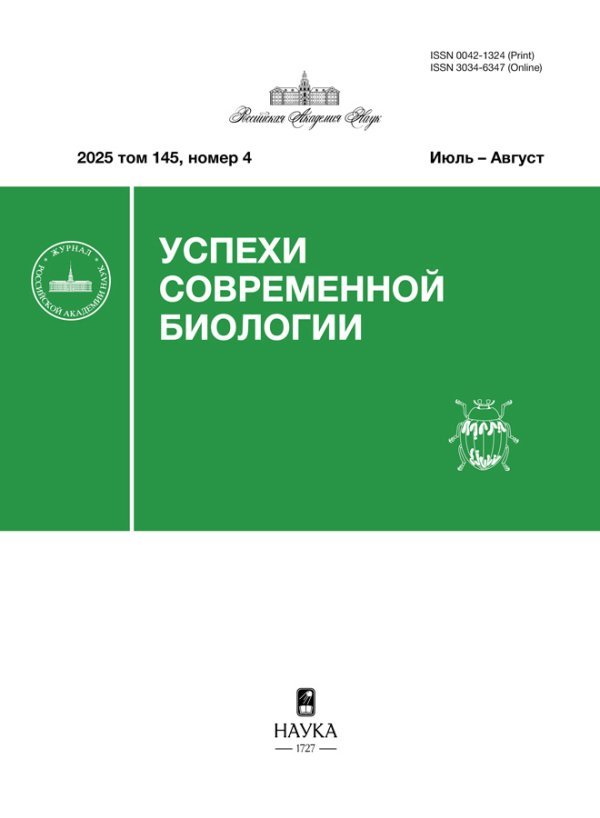Establishing a Collection of Bacteria that Mimic Human Infectious Agents in Order to Use Them for the Development of Rapid Antibiotic Resistance Testing Methods
- Authors: Epova E.Y.1,2, Aliev R.O.1,3, Shcherbakova E.S.3, Nguyen H.T.3, Trubnikova E.V.1,2, Shevelev A.B.1,3
-
Affiliations:
- Emanuel Institute of Biochemical Physics, Russian Academy of Sciences
- Kursk State University
- Vavilov Institute of General Genetics, Russian Academy of Sciences
- Issue: Vol 145, No 4 (2025)
- Pages: 297-309
- Section: Articles
- Submitted: 24.11.2025
- Published: 15.12.2025
- URL: https://stomuniver.ru/0042-1324/article/view/696926
- DOI: https://doi.org/10.31857/S0042132425040017
- ID: 696926
Cite item
Abstract
A collection of 25 bacterial isolates has been picked up from the leaves of alfalfa Medicago sativa, Miscanthus giganteus culvars Kamis and Bagryany, winter rapeseed Brassica napus, tulip Tulipa sp., green parts of Lamium album, celandine Celidonium majus and Sarepta mustard Brassica juncea, as well as the red poultry mite Dermanyssus gallinae and soil nematode Steinernema carpocapsae. There are 7 representatives of the genus Bacillus, Exiguobacterium and Priestia among the isolates; 5 isolates of the genus Pseudomonas, 2 isolates of the genus Pantoea, 8 isolates of the genus Staphylococcus, and representatives of the type of Actinomycetota: Pseudoclavibacter and Micrococcus. Identification of the taxonomic affiliation of the isolates was carried out by sequencing of complete 16S ribosomal DNA genes, which are deposited in the GenBank database. The degree of resistance of isolated isolates to five common antibiotics was studied: kanamycin (Km), ampicillin (Ap), spectinomycin (Sp), erythromycin (Em) and chloramphenicol (Cm). Strains resistant to several antibiotics, to individual antibiotics, and are not resistant to any of the tested antibiotics have been identified within each taxonomic group. This makes possible comparison of the effectiveness of rapid antibiotic resistance testing methods on several groups of bacteria.
About the authors
E. Y. Epova
Emanuel Institute of Biochemical Physics, Russian Academy of Sciences; Kursk State University
Author for correspondence.
Email: tr_e@list.ru
Moscow, Russia; Kursk, Russia
R. O. Aliev
Emanuel Institute of Biochemical Physics, Russian Academy of Sciences; Vavilov Institute of General Genetics, Russian Academy of Sciences
Email: tr_e@list.ru
Moscow, Russia; Moscow, Russia
E. S. Shcherbakova
Vavilov Institute of General Genetics, Russian Academy of Sciences
Email: tr_e@list.ru
Moscow, Russia
H. T. Nguyen
Vavilov Institute of General Genetics, Russian Academy of Sciences
Email: tr_e@list.ru
Moscow, Russia
E. V. Trubnikova
Emanuel Institute of Biochemical Physics, Russian Academy of Sciences; Kursk State University
Email: tr_e@list.ru
Moscow, Russia; Kursk, Russia
A. B. Shevelev
Emanuel Institute of Biochemical Physics, Russian Academy of Sciences; Vavilov Institute of General Genetics, Russian Academy of Sciences
Email: tr_e@list.ru
Moscow, Russia; Moscow, Russia
References
- Пушкарева В.И., Литвин В.Ю., Ермолаева С.А. Растения как резервуар и источник возбудителей пищевых инфекций // Эпидемиол. вакцинопрофил. 2012. № 2 (63). С. 10–20.
- Adane W.D., Chandravanshi B.S., Tessema M. A novel electrochemical sensor for the detection of metronidazole residues in food samples // Chemosphere. 2024. V. 359. P. 142279.
- Allegranzi B., Bagheri Nejad S., Combescure C. et al. Burden of endemic health-care-associated infection in developing countries: systematic review and meta-analysis // Lancet. 2011. V. 377 (9761). P. 228–241.
- Dong Y., Iniguez A.L., Ahmer B.M. Kinetics and strain specificity of rhizosphere and endophytic colonization by enteric bacteria on seedlings of Medicago sativa and Medicago truncatula // Appl. Environ. Microbiol. 2003. V. 69 (3). P. 1783–1790.
- Hassanain W.A., Johnson C.L., Faulds K. et al. Ultrasensitive dual ELONA/SERS-RPA multiplex diagnosis of antimicrobial resistance // Anal. Chem. 2024. V. 96 (29). P. 12093–12101.
- Lane D.J. 16S/23S rRNA sequencing // Nucleic acid techniques in bacterial systematics / Eds E. Stackebrandt, M. Goodfellow. N.Y.: John Wiley and Sons, 1991. P. 115–175.
- Lane D.J., Pace B., Olsen G.J. et al. Rapid determination of 16S ribosomal RNA sequences for phylogenetic ana- lyses // PNAS USA. 1985. V. 82 (20). P. 6955–6959.
- Mulani M.S., Kamble E.E., Kumkar S.N. et al. Emerging strategies to combat ESKAPE pathogens in the era of antimicrobial resistance: a review // Front. Microbiol. 2019. V. 10. P. 539.
- Nakano M., Kalsi S., Morgan H. Fast and sensitive isothermal DNA assay using microbead dielectrophoresis for detection of anti-microbial resistance genes // Bio- sens. Bioelectron. 2018. V. 117. P. 583–589.
- Oeschger T.M., Erickson D.C. Visible colorimetric growth indicators of Neisseria gonorrhoeae for low-cost diagnostic applications // PLoS One. 2021 V. 16 (6). P. 0252961.
- Pasquier E., Owolabi O.O., Powell B. et al. Assessing post-abortion care using the WHO quality of care framework for maternal and newborn health: a cross-sectio- nal study in two African hospitals in humanitarian settings // Reprod. Health. 2024. V. 21 (1). P. 114.
- Rana S., Kaur K.N., Narad P. et al. Knowledge, attitudes and practices of antimicrobial resistance awareness among healthcare workers in India: a systematic review // Front Public Health. 2024. V. 12. P. 1433430.
- Saha M., Sarkar A. Review on multiple facets of drug resistance: a rising challenge in the 21st century // J. Xenobiot. 2021. V. 11 (4). P. 197–214.
- Salehi B., Quispe C., Butnariu M. et al. Phytotherapy and food applications from Brassica genus // Phytother. Res. 2021. V. 35 (7). P. 3590–3609.
- Swami P., Sharma A., Anand S., Gupta S. DEPIS: a combined dielectrophoresis and impedance spectroscopy platform for rapid cell viability and antimicrobial susceptibility analysis // Biosens. Bioelectron. 2021. V. 182. P. 113190.
- Treichel S., Hartmann M., Rump A. et al. Evaluation of a didanosin-containing regimen including genotypic resistance testing: an open-label, multicenter study // Eur. J. Med. Res. 2003. V. 8 (9). P. 405–413.
- Wesseling C.M.J., Martin N.I. Synergy by perturbing the gram-negative outer membrane: opening the door for gram-positive specific antibiotics // ACS Infect. Dis. 2022. V. 8 (9). P. 1731–1757.
- Zhang Y., Fan W., Shao C. et al. Rapid determination of antibiotic resistance in Klebsiella pneumoniae by a novel antibiotic susceptibility testing method using SYBR green I and propidium iodide double staining // Front. Microbiol. 2021. V. 12. P. 650458.
Supplementary files










